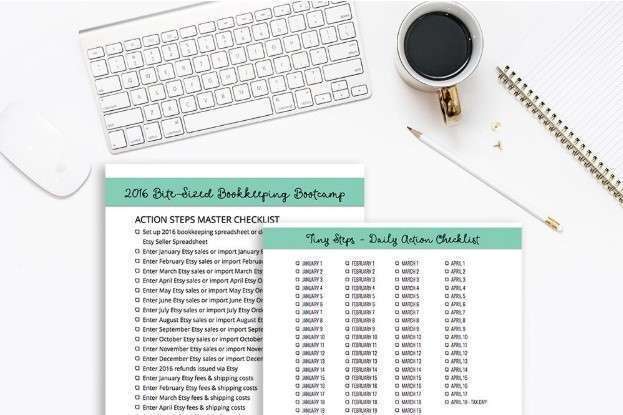
Of course equity includes capital, revenue, expenses, gains, losses, drawings, and retained earnings, so the ledger must at least include GL account codes for each of these groups. An audit is a process of examining financial statements and records to ensure that they are accurate and comply with accounting standards. Auditors are professionals who perform audits and provide an independent opinion on the financial statements of an organization. Computerized accounting systems have made the process of preparing a trial balance much easier and less time-consuming than manual methods. With the click of a button, the software can generate a trial balance that includes all the accounts in the general ledger.
Types of Trial Balances
To see if the wells in the previous example made money, select “Sum is less than” and enter an amount in the amount field. When the desired Sub-Table is entered in the Sub-Table field, the Sub-Accounts will populate in “List of All Items”. If desired, Sub-Accounts can be individually selected and moved to the “List of Selected Items” section.
- The post-closing trial balance is used to verify that all temporary accounts have been closed and that the retained earnings account has the correct balance.
- Understanding these nuances is pivotal to leveraging the trial balance effectively.
- Ledger management also involves ensuring that all transactions are properly categorized and recorded.
- But when you have many other projects in a short period (and clients delay sending the information you need to perform these tasks), you can easily forget this critical function.
- A trial balance is a summary of all the accounts in the general ledger and their balances.
- In bookkeeping and accounting, a ledger is a record-keeping system that allows businesses to track financial transactions.
Cash Book

These accounts are used to track financial transactions and maintain accurate records of a company’s financial activities. The adjusted trial https://www.bookstime.com/ balance is a list of all the accounts in the general ledger with their balances. It is used to ensure that the total debits equal the total credits in the general ledger. The adjusted trial balance is used to create the balance sheet and income statement. A trial balance is an accounting report that lists all accounts and their balances at a given point in time. It ensures the integrity of the double-entry bookkeeping system by confirming that the total of debit balances equals the total of credit balances.
Not closing out temporary accounts
- For example, if a business purchases a new piece of equipment with cash, the journal entry would show a debit to the equipment account and a credit to the cash account.
- If the totals of the two columns are equal, the trial balance is said to balance.
- Although the trial balance serves as an essential tool in bookkeeping, it’s not entirely foolproof.
- Auditors use the trial balance to verify the accuracy of the financial statements.
- The income statement is a financial statement that shows a company’s revenue and expenses over a specific period of time.
- This helps you to maintain the integrity of the general ledger (GL) and, by extension, the financial decisions.
The trial balance is a crucial tool in the preparation of financial statements. It plays a vital role in ensuring the accuracy of financial statements, particularly the balance sheet. A simplified form of a general ledger account with space at the top for the account title and two sides for recording debits and credits. A clear chart of accounts (which shows your team how to categorize and represent financial information in a company’s records) ensures your data is properly classified. In a trial balance, the balance on the debit side must equal that on the bookkeeping credit side. Equality shows that the books are accurate, and financial statements can be prepared.
The nominal ledger is a ledger that contains all the nominal accounts used in accounting. It is used to record transactions related to revenue, expenses, gains, and losses. The process of transferring the debit and credit information from the journal to individual accounts in the general ledger. However, no number of best practices will suffice without implementing accounting practice management software to manage your ledger projects, client collaboration, and team capacity. Financial Cents’ document management features enable you to exchange documents securely with your clients through a dedicated client portal.

Separating these accounts from the main ledger removes a large amount of detail and allows different staff to work on different aspects of the accounting records. Any accounts not in these ledgers such as asset, liability, and capital accounts remain in the general ledger. As with the main ledger, postings to the subledgers are from the books prime entry. Each account is assigned a unique account number, which is used to identify the account in the accounting records. The trial balance is prepared by taking the balances from the general ledger and listing them in a worksheet. To avoid mathematical errors, it is important to double-check all calculations before finalizing the trial balance.

Finally, check the box “Limit which Sub-Account(s) to be included in Group,based on dollar comparison” if desired. Accountants are typically responsible for more complex financial tasks, such as preparing tax returns, analyzing financial data, and providing financial advice to business owners. Regular reconciliation of the general ledger with sub-ledgers and bank accounts enables you to detect and correct errors to keep your client’s general ledger accurate and up-to-date. They allow you to teach your team how to structure each client’s chart of accounts and post (and reconcile) transactions using templates. General ledger accounts are presented in tabular formats to ease the tracking and summarization of account activities. The five accounts in the general ledger represent the pillars upon which every company’s financial position is established.
Flashcards in trial balance
In bookkeeping and accounting, financial statements are the primary output of the accounting process. Financial statements are a collection of reports that provide information about the financial health of a business. Although the trial balance serves as an essential tool in bookkeeping, it’s not entirely foolproof. Errors such as the omission of a transaction or recording a transaction in the wrong account can lead to a balanced trial balance that still contains inaccuracies. Moreover, it doesn’t account for fraudulent activities disguised as correct entries. Thus, understanding the limits of what a trial balance can achieve is as crucial as using it to check your ledgers.
It is an internal report that helps to ensure that all the debits match with the credits after the recording of all transactions. A ledger is a book or computer file that contains all the accounts used by a company. A trial balance, on the other hand, is a statement of all the ledger account balances at a specific point in time. The main difference between the two is that a ledger is a record a list of the general ledger accounts and their balances at a particular date is a: of financial transactions, while a trial balance is a summary of those transactions.
